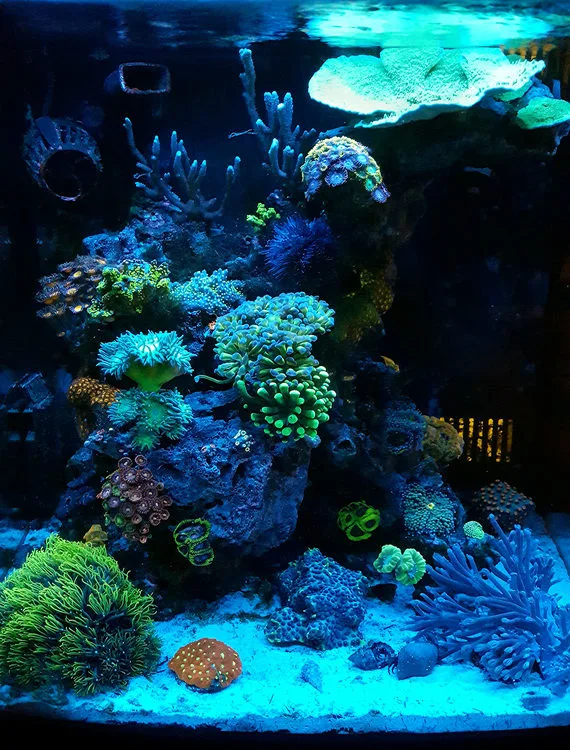Stunning 16-Gallon Reef Tank – Jackal227's TOTM | NanoReef

Tank Specifications
Volume: 16 Gallons / 60 Liters
Dimensions (L × W × H):
16.0" ×
16.0" ×
16.0"
40.6cm ×
40.6cm ×
40.6cm
Equipment List
No equipment information available
Frequently Asked Questions
How often should I perform water changes in a reef tank?
For a reef tank like Jackal227's, performing water changes every week is recommended. This helps to maintain stable water parameters essential for coral health. In Jackal227's case, 2.5 gallons are changed weekly, which is manageable and allows for consistent water quality.
What process should I follow when doing a water change?
When performing a water change, first remove the desired amount of tank water, then vacuum the sand bed and change the filter floss to keep the tank clean. Additionally, scrape the glass to remove algae before adding fresh saltwater, which helps to maintain good visibility and water quality.
How do I establish good water parameters for corals?
Maintaining stable water parameters is crucial for coral health. In Jackal227's tank, weekly water changes helped keep nitrate levels low. It's also important to monitor alkalinity, calcium, and magnesium levels as they are vital for coral growth. Jackal227 uses a digital tester for alkalinity to make monitoring easier.
How often should I feed my fish and what should I feed them?
In Jackal227's setup, fish are fed daily with a varied diet of pellets, specifically PE Pellets and Nyos Wild Goji pellets, which are easy for fish to eat and preferred by the species.
How should I target feed my corals?
Corals can be targeted with feeds like Reef Roids once a week prior to a water change. This timing helps to prevent excess nutrients in the tank by allowing leftover food to be removed during the water change.
What kinds of tests should I regularly perform in a reef tank?
Initially, it is advisable to test for pH, ammonia, nitrite, and nitrate weekly until the tank is stable. After adding corals, focus on testing the three essential parameters: alkalinity, calcium, and magnesium. Regular testing helps to ensure these variables remain within optimal ranges for coral health.
What do I need to know about dosing in my reef tank?
Dosing in a reef aquarium can be managed with a dosing pump coupled with a two-part solution like Bionic. Regular monitoring of alkalinity helps determine appropriate dosing amounts. Jackal227 doses 9 ml of each solution three times a day and adds Acropower weekly.
What should I do if my corals are not thriving?
If your corals appear closed or show pale colors, it may indicate something is wrong. Regular water changes, avoiding rapid parameter swings, and observing your corals closely can provide insights into potential issues. Keeping parameters stable is more beneficial than aiming for precise numbers.
How can I manage pests such as Aiptasia in my tank?
Managing pests like Aiptasia can often be done manually or with the introduction of natural predators. It's crucial to keep an eye on algae growth and do manual removals, as well as maintain stable water conditions to avoid further outbreaks.